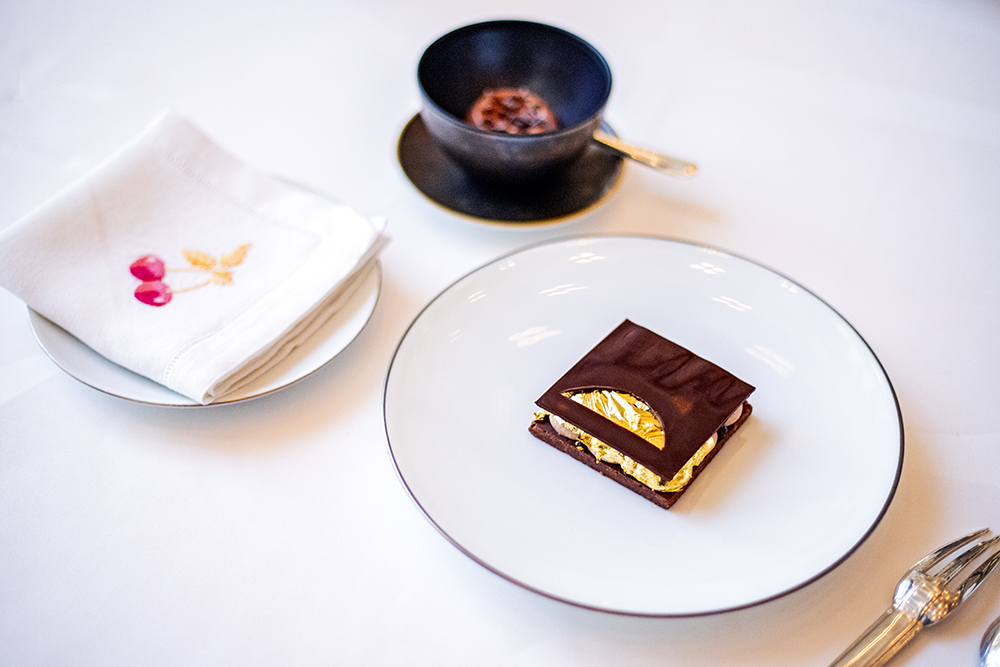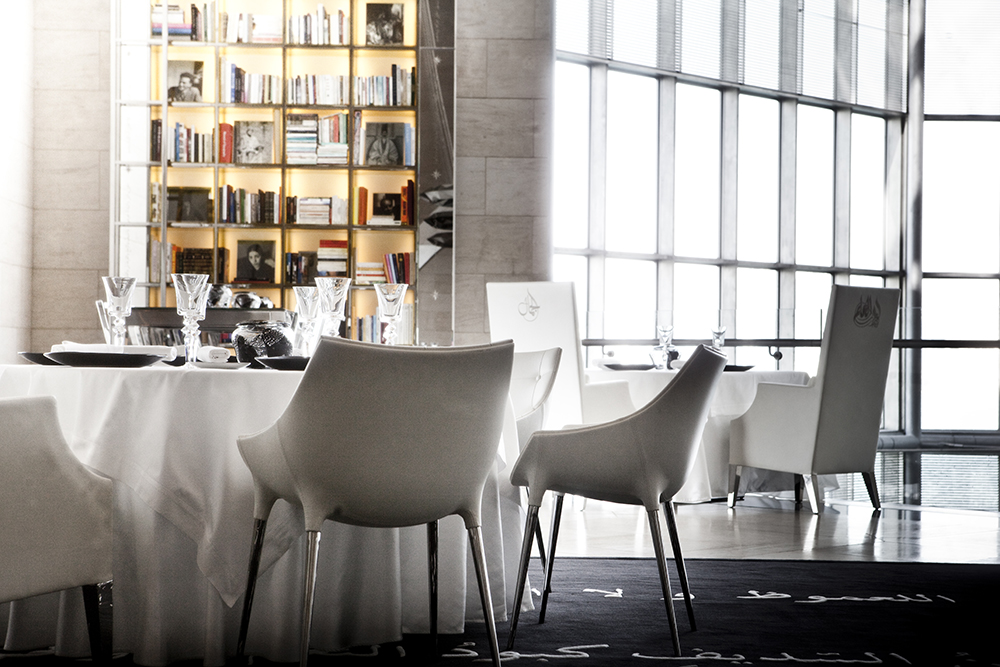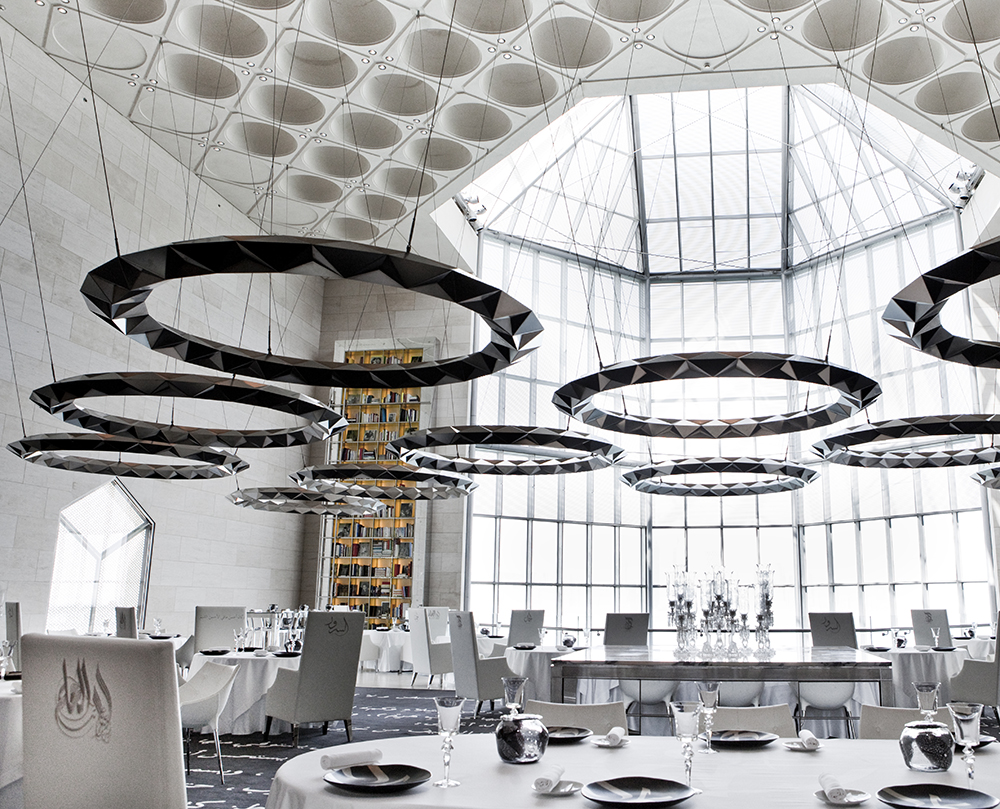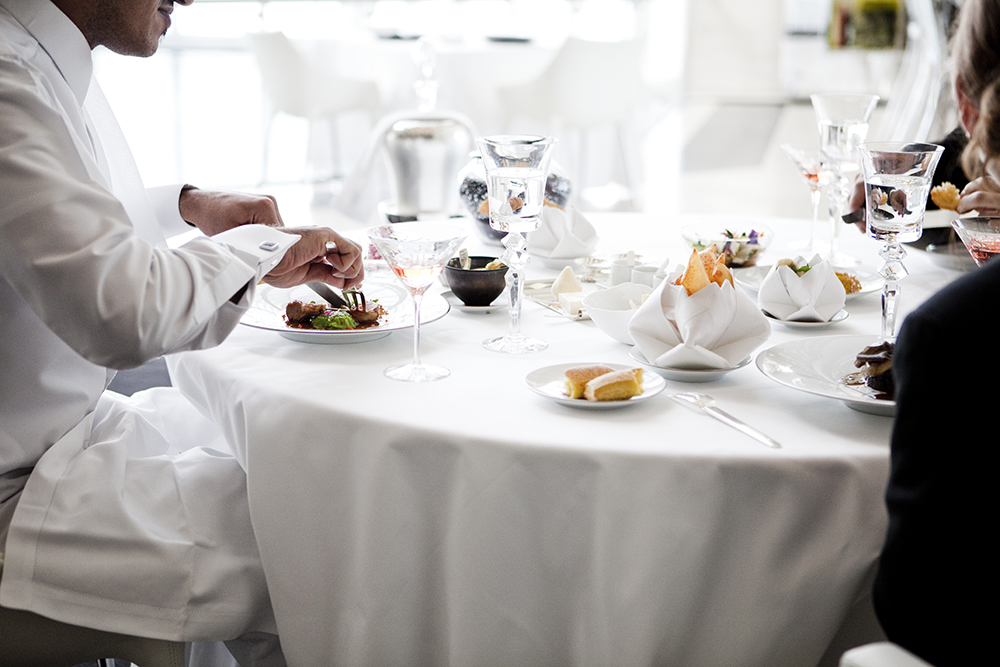Qatar Museums (QM), the nation’s preeminent institution of art and culture provides authentic and inspiring cultural experiences through a growing network of museums, heritage sites, festivals, public art installations, and programmes. It also owns two amazing restaurants operated by the prominent Ducasse Group: Jiwan on the top of the National Museum of Qatar designed by Jean Nouvel, and IDAM on the top floor of the Museum of Islamic Art (MIA). We were invited by QM to experience both of them. This year we visited IDAM and had the opportunity to interview the world-famous Philippe Starck, its interior designer and the supervizing chef Alain Ducasse.
Monsieur Ducasse, you have a lot of different restaurants in your portfolio. You manage three in Doha as well: Jiwan, IDAM and Café #999 were your first footprints in the Arabic world. What have you learned from this market?
Alain Ducasse: We are having a very exciting experience in Qatar. We opened IDAM back in January 2013, Jiwan was launched in 2019 and Café #999 opened at the beginning of this year. What strikes me is how much the country changed over time. Somehow, the acceleration of changes brought by the World Cup are just the tip of the iceberg. As a cook, I am passionate about the culinary scene of Qatar. One can say it is nourished by the Arabic food tradition. Yet, on the other hand, it is also very cosmopolitan, integrating both Western and Eastern influences.

Monsieur Starck, you have a big experience in the gastronomy design, even in the GCC. Katsuya Dubai is a totally different concept like IDAM. How did you start this project? What was your main inspiration?
Philippe Starck: I am not interested in design or architecture. For me, architecture is not made of stone, glass and steel, it is made of the film of our lives. What interests me is ‘us’, the human beings. I feel more like a film director, preparing the emotion for the guests who become actors. There is no project without a vision. A restaurant is nothing more than a place where people come for legitimate and respectful reasons: to eat to live. The real subject of this restaurant is food. The Museum of Islamic Art (MIA) is one of the world’s most spectacular architectures, which deserves to house the most beautiful collection of Arab culture. A museum is first and foremost a mental construct, it is purely cultural. My aim is to bring us, to bring everyday life through the ceremony of eating with family and friends and to achieve a sophisticated and mixed cocktail of culture and life. With IDAM, I want to encourage people to step out of the everyday, to enter a world enchanted by ancient tales.

It’s not common that a main museum of a country operates a fine dining restaurant like yours. Why have Qatar Museums (QM) wanted to launch this project?
Alain Ducasse: In France, we work for many cultural establishments, as an example The Quai Branly – Jacques Chirac museum. I believe that offering such elevated cuisine experience in Qatar Museums makes a lot of sense. It perfectly resonates with the beauty of the architecture, the gorgeous scenery and, of course, the quality of the exhibitions.
Did you work with Monsieur Ducasse before? How would you describe the work with him? Has the menu made an impact on you? When you design a restaurant how important it is for the design to match with the culinary?
Philippe Starck: This was the first time I worked with Alain Ducasse, before collaborating with him again for Le Meurice in Paris. When I was invited to work on this project (IDAM), I thought of this Master for the following reason: I love food, especially Arabic food, but sometimes it does not correspond to the values of health and dietetics. Alain Ducasse is a culinary genius, who would know how to bring traditional Arabic cuisine to a new stage of modernity. Everyone should be concerned about health, because it supports the brain and the brain is the producer of intelligence and creativity. It is the centre of the project. The architecture is just the envelope around it. Mr. Ducasse always has interesting surprises in store for us.

Besides being a famous chef, you are a businessman too with a tight schedule. How much time do you have to supervise your Qatari restaurants?
Alain Ducasse: I am not a businessman. I’m first and foremost a cook. Therefore, I always concentrate on the cuisine we propose in our restaurants. I behave as an artistic director. I define the spirit I wish for each restaurant. I chose the executive chef and I validate the menu. It takes time but the talent of my team makes it possible to work smoothly.
What are the most typical elements of the Starck style one can recognise easily in IDAM?
Philippe Starck: I don’t have a style. I have logic. I have dreams. Here, I brought a touch of surrealism and poetry with some fertile surprises, through the personalities of the world of art and literature pictured on the shelves, or the Arabic calligraphy reminiscent of folk tales from the Islamic golden age inscribed on the carpet. They are just little surprises that can give other ideas and open doors in the minds of people who will be interested in dreaming and building their own vision.
Do you see any similarities between French and Qatari gastronomy? What are your personal highlights in the Qatari cuisine?
Alain Ducasse: In Qatar like everywhere in the world, the cuisine is a sample of the overall culture of the country. Therefore, there are very few similarities between French and Qatari cuisines. This is exactly why I love to travel and experiment these differences. In Qatar, I particularly appreciate the flavours of spices.

Besides the lighting, the most characteristic elements are the two bookshelves. It’s not a common thing in a restaurant, is it? Why was it so important for you to use them?
Philippe Starck: My natural food is literature. I have that passion from all over the world. I was particularly fascinated by the elegance, poetry and intelligence of Arabic literature. That is why it was a duty for me to pay tribute to all these Masters of Literature.
What is it like working together with your head chefs? Do you discuss the dishes with your head chef to the smallest details?
Alain Ducasse: Yes, down to the smallest details since the difference between good and excellent does lie in the details. In hospitality, each and every detail counts.
Photos: PR (JB Mondino, Kévin Tchobanian, Pierre Monetta)






